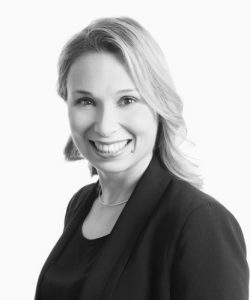October 27, 2017
Lessons in Measuring Student Success
What keeps campus administrators up at night? Three concerns routinely come up in our conversations with them across the United States: student success, retention and persistence.
Active Learning Classrooms (ALCs) have emerged to that end, creating environments that flex to meet the changing needs of both students and faculty. Rooms of a regular size with a variety of seating options, accessible walls for writing and presenting, natural light, and in some cases re-configurable infrastructure and walls. They’re a perfect example of convergence, one of the main themes from our Campus 2050 research, which I encourage you to request at populous.com/campus.
To justify the higher costs of building or retrofitting these types of spaces, educators hunt for measurable outcomes. Many have come up empty-handed, but a few innovators may have found a way forward.
Two of them participated in “Transformations: Putting student engagement first,” a micro-symposium organized by the Society of College and University Planners (SCUP) and held at Stanford University earlier this year.
Rich Holeton shapes some of the most utilized spaces on Stanford’s campus, chief among them the Lathrop Learning Hub. The spaces, so popular faculty must apply to the registrar to use them, invite students to learn in their own ways while inspiring faculty to teach differently.
But it’s Holeton’s work with the IT association Educause that may be the most exciting. Working with other members of the non-profit, he co-created a measuring stick called the Learning Space Rating System.
Similar to LEED, it provides a point-based system for measuring a room’s ability to create positive learning outcomes. Things like intuitive scheduling systems and the ratio of support staff to rooms are quantified, giving administrators a clear goal and grading system to evaluate their current inventory of space.
Alexandra Bernadotte, founder of Beyond 12, joined Holeton on the panel and shared her team’s own “high-tech, high-touch” approach to achieving student success among minority groups.
Meet @Beyond12: a digital mentorship platform transforming first-generation students into college graduates https://t.co/efr8GtZxMn #FFWD17 pic.twitter.com/ycaSJUbLvq
— Fast Forward (@FfwdOrg) September 27, 2017
With two apps, Beyond 12 tracks student journeys from kindergarten through college and coaches them along the way in an almost entirely virtual setting. The data collected is the most meaningful measure of student success I have witnessed so far as it is rooted in individual coaching and personal educational goals, tracked in detail, and carefully cross-referenced to available data from an individual students’ educational records pre-college.
Access to the MyCoach app also provides a safety net for first-generation college students who lack advisors at home for the struggles all coeds face.
Both examples share a common thread: having the courage to try something different. As this year comes to a close, I’m looking forward to talking with other like-minds about shifting mindsets.
What if, for example, schools first invited prospective students to campus instead of jumping right to the topic of applying? What if they offered valued perks similar to how tech employees attract and retain top talent? Things like free, dietary-conscious meals and regular campus-wide social events that are more meaningful than free pizza and a speech about student involvement. Think celebrations around popular music or historic campus milestones free of charge.
To further explore these ideas, keep your eyes peeled next year for our #Campus2050 consortium planned around the SCUP Annual Conference in Nashville, Tenn. Let’s keep the ideas and conversation flowing to encourage pivotal change in the education landscape.
♦♦♦
Lorem ipsum dolor sit amet consectetur, adipisicing elit. Non facere corporis et expedita sit nam amet aut necessitatibus at dolore enim quis impedit eius libero, harum tempore laboriosam dolor cumque.
Lorem, ipsum dolor sit amet consectetur adipisicing elit. Illo temporibus vero veritatis eveniet, placeat dolorem sunt at provident tenetur omnis, dicta exercitationem. Expedita quod aspernatur molestias eum? Totam, incidunt quos.
